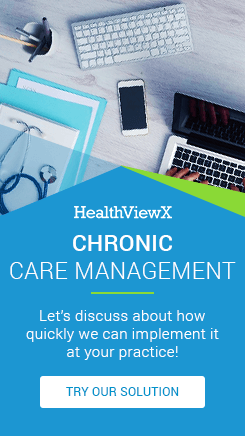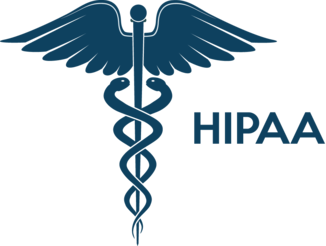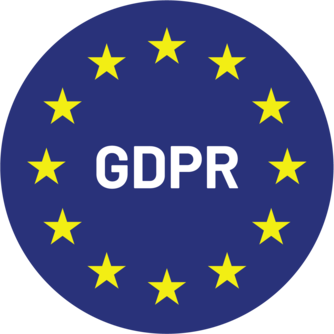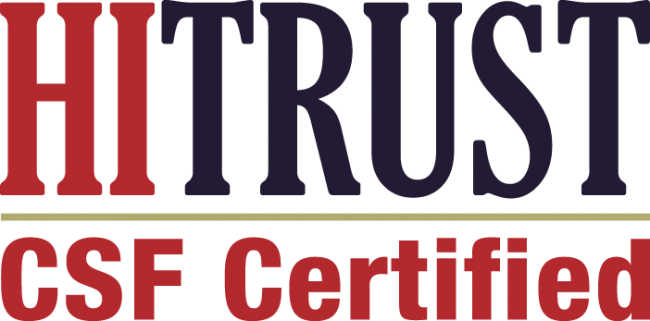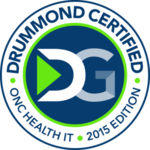Remote Patient Monitoring (RPM) has emerged as a transformative solution in healthcare delivery, particularly within the Medicare system. As healthcare costs continue to rise and the elderly population grows, payers are increasingly turning to RPM technologies to manage chronic conditions, reduce hospitalizations, and improve patient outcomes while maintaining cost efficiency. This comprehensive analysis explores how Medicare RPM is reshaping the healthcare landscape for payers, patients, and providers alike.
Understanding Medicare RPM
Remote Patient Monitoring involves the use of digital technologies to collect health data from patients in one location and electronically transmit it to healthcare providers in another location for assessment and recommendations. For Medicare beneficiaries, who often manage multiple chronic conditions, RPM offers continuous monitoring outside traditional clinical settings.
Medicare covers RPM services under specific CPT codes (99453, 99454, 99457, 99458, and 99091), allowing healthcare providers to bill for device setup, data collection, and interactive communication with patients. This reimbursement structure has incentivized widespread adoption and created opportunities for payers to implement cost-effective care models.
The Cost Efficiency Impact
Reduction in Hospital Readmissions
One of the most significant cost-saving benefits of RPM for Medicare payers is the reduction in hospital readmissions. Hospital readmissions within 30 days of discharge cost Medicare an estimated $26 billion annually, with approximately $17 billion considered preventable.
Studies have demonstrated impressive results:
- RPM programs have shown the potential to reduce hospital readmissions by 38% for chronic condition patients
- A study of congestive heart failure patients using RPM reported a 50% reduction in 30-day readmission rates
- Remote monitoring programs for COPD patients have demonstrated readmission reductions of 30-40%
With the average cost of a hospital readmission ranging from $10,000 to $15,000, these reductions translate into substantial savings for Medicare payers.
Emergency Department Visit Reduction
Emergency department visits represent another significant cost driver for Medicare. RPM enables early detection of health deterioration, allowing for timely interventions before conditions escalate to emergency situations.
Research indicates:
- RPM implementation has led to 20-35% reductions in ED visits among Medicare populations
- The average cost of an ED visit ranges from $500 to $3,000, making prevention through RPM highly cost-effective
- For every dollar spent on RPM, payers can save $3-$10 in emergency and acute care costs
Length of Stay Optimization
When hospitalizations do occur, RPM data helps clinicians make more informed decisions, potentially reducing length of stay:
- Hospitals using RPM data have reported 2-3 day reductions in average length of stay
- Shorter hospital stays reduce costs by approximately $1,500-$2,500 per day saved
- Improved discharge planning supported by RPM data leads to safer transitions and fewer complications
Impact on Patient Outcomes
Chronic Disease Management Enhancement
Medicare beneficiaries typically manage 2-3 chronic conditions simultaneously. RPM provides continuous monitoring that supports better disease management:
Diabetes Management:
- Continuous glucose monitoring through RPM has shown HbA1c reductions of 0.5-1.5%
- Better glucose control reduces the risk of complications, preventing costly interventions
- RPM patients demonstrate 30% better medication adherence rates
Hypertension Control:
- Blood pressure monitoring via RPM achieves control rates of 70-75% compared to 50-55% with standard care
- A 10 mmHg reduction in systolic blood pressure can reduce cardiovascular events by 20%
- Improved hypertension management saves Medicare approximately $2,000-$3,000 per patient annually
Congestive Heart Failure:
- Daily weight and vital sign monitoring enables early detection of fluid retention
- RPM programs have demonstrated mortality reductions of 20-45% in CHF populations
- Improved quality of life scores and functional capacity among monitored patients
Medication Adherence Improvement
Poor medication adherence costs the U.S. healthcare system $100-$290 billion annually. RPM programs with integrated medication reminders and monitoring show:
- 25-40% improvement in medication adherence rates
- Reduced disease progression and complication rates
- Better therapeutic outcomes leading to fewer interventions
Patient Engagement and Satisfaction
RPM empowers patients to take an active role in their healthcare:
- Patient satisfaction scores increase by 15-25% with RPM programs
- 85-90% of patients report feeling more connected to their care team
- Improved health literacy and self-management capabilities
Return on Investment for Payers
Direct Cost Savings
Medicare Advantage plans and other payers implementing comprehensive RPM programs report:
- Average cost savings of $1,800-$8,000 per patient per year
- ROI ranging from 200-400% within the first 2-3 years of implementation
- Reduction in total cost of care by 10-25% for high-risk populations
Risk Score Management
For Medicare Advantage plans operating under risk-adjusted payment models:
- RPM enables better documentation of patient conditions and severity
- Improved risk score accuracy leads to more appropriate reimbursement
- Enhanced hierarchical condition category (HCC) capture rates
Value-Based Care Alignment
RPM strongly supports value-based care initiatives:
- Better performance on quality metrics improves bonus payments
- Reduced utilization helps payers succeed in shared savings programs
- Enhanced care coordination improves attribution and patient retention
HealthViewX RPM Platform: A Comprehensive Solution for Payers
As payers seek to maximize the benefits of Medicare RPM while managing implementation complexity, selecting the right technology platform becomes critical. The HealthViewX RPM platform represents a comprehensive, payer-focused solution that addresses the key challenges in delivering cost-effective remote monitoring at scale.
Integrated Platform Architecture
HealthViewX offers an end-to-end RPM solution specifically designed to meet the needs of Medicare payers and the providers in their networks. The platform’s integrated approach addresses the full spectrum of RPM implementation:
Seamless EHR Integration: The platform integrates seamlessly with existing electronic health records and workflows, ensuring smooth data management and analysis. This eliminates the data silos that often plague RPM programs and allows clinical teams to access patient monitoring data within their familiar EHR environment.
Device Flexibility: The platform seamlessly integrates with various FDA-approved devices, including blood pressure monitors, glucose meters, pulse oximeters, weight scales, and advanced wearable devices. This flexibility enables payers to customize monitoring protocols based on specific patient populations and their unique chronic disease management needs.
Multi-Device Support: The platform’s ability to handle multiple data streams simultaneously makes it particularly valuable for patients with multiple chronic conditions, a common scenario among Medicare beneficiaries that creates the highest costs for payers.
Financial Performance and ROI
For payers focused on cost efficiency, HealthViewX delivers measurable financial results:
Healthcare organizations using HealthViewX have achieved an average increase of $105 per patient per month in successfully billed RPM services, a 43% reduction in billing staff time devoted to RPM claims processing, an 89% first-pass claim acceptance rate compared to the industry average of 70%, and an ROI of 4:1 within the first year.
These metrics directly address payers’ need for financially sustainable RPM programs. The platform’s billing optimization capabilities ensure maximum reimbursement capture while reducing administrative overhead, a critical factor in achieving positive ROI.
Compliance and Documentation
Medicare RPM reimbursement requires strict adherence to CMS guidelines. HealthViewX simplifies compliance management:
The platform is specifically designed to meet all CMS requirements for Medicare RPM reimbursement and automatically tracks the necessary metrics for billing compliance, including data collection frequency, clinical staff time, and documentation requirements.
Organizations utilizing HealthViewX’s documentation systems report a 65% reduction in time spent on RPM paperwork and a 47% decrease in claim denials related to insufficient documentation. For payers, this means fewer disputes, faster reimbursement cycles, and reduced administrative costs.
Additionally, healthcare organizations implementing HealthViewX’s compliance features report 53% fewer post-payment audit issues and a 29% increase in overall RPM reimbursement.
Patient Engagement and Adherence
Technology is only effective if patients actually use it. HealthViewX prioritizes user experience to drive engagement:
The patient portal provides easy-to-understand visualizations of health data, educational resources, and communication tools that keep patients connected with their healthcare teams. Higher engagement translates directly to better outcomes and lower costs for payers.
The platform’s predictive analytics identify non-adherent patients by day 10 of each month, triggering automated patient outreach through text or phone reminders, and this proactive approach has increased compliance rates by 43% among previously non-adherent patients.
Workflow Automation and Efficiency
For payers working with provider networks, workflow efficiency directly impacts program scalability and cost-effectiveness:
The platform automates routine tasks like data collection, alert generation, and documentation, freeing clinical staff to focus on patient interaction and clinical decision-making. This automation allows providers to monitor larger patient populations without proportional increases in staffing costs.
The platform features automated data collection and real-time alerts for proactive interventions, ensuring that clinical teams focus their attention where it’s needed most.
Value-Based Care Support
As Medicare increasingly moves toward value-based payment models, payers need RPM solutions that support these arrangements:
The platform’s comprehensive approach to chronic disease management, readmission reduction, and preventive care makes it particularly well-suited for strategic alignment with value-based contracts.
The platform’s Service Differentiation Module separates and tracks activities that qualify for RPM versus CCM billing, preventing duplicate billing while ensuring all eligible services are captured, and organizations report a 27% increase in appropriate utilization of both services.
Scale and Proven Performance
Implementation scale matters for payers evaluating platform reliability. HealthViewX has helped deliver 5 Million plus Patient Encounters with its platform and suite of solutions, demonstrating the scalability necessary for large Medicare populations.
Integration with Chronic Care Management
For comprehensive cost management, RPM works best when integrated with other care coordination programs. RPM, when combined with CCM, increases revenue and improves outcomes, and platforms like HealthViewX streamline care management, documentation, and reimbursement.
This integrated approach allows payers to maximize the value of their care management investments while providing seamless experiences for both providers and patients.
Implementation Strategies for Payers
Target Population Identification
Successful RPM programs focus on high-risk, high-cost populations:
- Patients with multiple chronic conditions (polychronic)
- Recent hospital discharges or frequent ED users
- Patients with poor disease control or medication non-adherence
- Social determinants of health factors indicating higher risk
Technology Selection and Integration
Payers should prioritize:
- User-friendly devices with high patient adoption rates
- Seamless EHR integration for provider workflows
- Cellular-enabled devices to overcome connectivity barriers
- FDA-cleared medical-grade devices ensuring data accuracy
Provider Engagement and Support
Provider participation is critical:
- Adequate reimbursement structures for RPM services
- Training and technical support for clinical teams
- Clear protocols for alert management and patient outreach
- Integration with existing care management programs
Patient Education and Onboarding
Effective patient engagement requires:
- Clear communication about program benefits and expectations
- Technical support for device setup and troubleshooting
- Cultural and linguistic appropriateness in materials and support
- Ongoing encouragement and feedback mechanisms
Overcoming Implementation Challenges
Technology Barriers
While adoption has grown, challenges remain:
- Approximately 25-30% of Medicare beneficiaries lack smartphone or internet access
- Digital literacy varies significantly in elderly populations
- Solution: Cellular-enabled devices with simplified interfaces and phone-based support
Workflow Integration
Providers may struggle with:
- Alert fatigue from monitoring multiple patients
- Time constraints for reviewing and responding to data
- Solution: AI-powered triage systems and dedicated care coordinators
Regulatory Compliance
Payers must navigate:
- HIPAA requirements for data security and transmission
- Medicare coverage criteria and documentation requirements
- State-specific telehealth and RPM regulations
- Solution: Compliance-focused vendors and legal consultation
Best Practices for Maximizing RPM Value
- Start with Clear Objectives: Define specific clinical and financial goals before implementation
- Engage Stakeholders Early: Include providers, patients, and care teams in program design
- Invest in Infrastructure: Ensure adequate staffing and technology support
- Monitor and Optimize: Track metrics continuously and adjust protocols based on data
- Focus on Patient Experience: Prioritize ease of use and responsive support
- Integrate with Care Management: Connect RPM with broader population health initiatives
- Leverage Data Analytics: Use insights to identify trends and improvement opportunities
- Ensure Sustainability: Build scalable models that can expand as programs grow
Conclusion
Medicare RPM represents a powerful tool for payers seeking to improve both cost efficiency and patient outcomes. With demonstrated reductions in hospitalizations, ED visits, and overall healthcare utilization, combined with improved chronic disease management and patient satisfaction, RPM delivers measurable value across multiple dimensions.
Platforms like HealthViewX provide the comprehensive infrastructure, compliance safeguards, and proven results that payers need to implement RPM programs successfully at scale. With a documented ROI of 4:1 in the first year, significant reductions in administrative burden, and superior claim acceptance rates, the right technology partner can transform RPM from a promising concept into a financially sustainable reality.
As the Medicare population continues to grow and healthcare costs rise, RPM will become increasingly essential for payers managing risk and delivering value-based care. Success requires strategic implementation, ongoing optimization, and commitment to patient-centered design. Payers who invest in comprehensive RPM programs today, leveraging proven platforms that address both clinical and operational challenges, position themselves for competitive advantage in tomorrow’s healthcare marketplace.
The evidence is clear: Medicare RPM isn’t just a technological innovation; it’s a fundamental shift in how we deliver, monitor, and optimize care for our most vulnerable populations. For payers willing to embrace this transformation with the right technology partners and implementation strategies, the returns, both financial and clinical, are substantial and sustainable.


